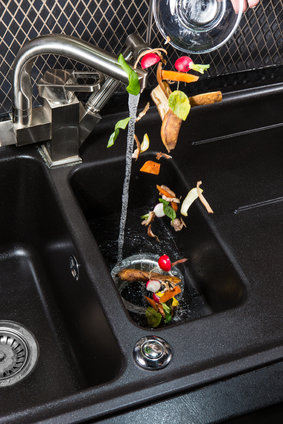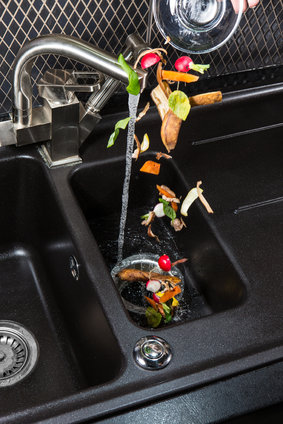Many home appliances are under-appreciated by their owners. Food waste disposers are near the top of the “out of sight, out of mind” list of appliances. But their usefulness goes beyond convenience, and they’re helping the environment every day.
Let’s take a deeper dive into the work these appliances do for the environment.
Food waste disposers may be the first line of defense we have against the more than 30 million tons of food waste that ends up in landfills each year. That food waste, which makes up about 18 percent of the waste in US landfills, produces greenhouse gasses that can harm the environment. The USDA estimates that about 133 billion pounds of food is wasted in the US each year, or just over 30 percent of the total food supply. 250 million tons of trash were generated. 31.79 million tons (12.7%) of this was food waste. Only 2.5% of THAT (0.3% of total waste) was then recovered and turned into helpful environmental components. The amount of waste in 2008 had more than doubled from the 1960 figure of 12.2 million tons per year, and it has increased more since 2008.
The good news is that a food waste disposer can make sure those scraps don’t go to waste in a landfill. Here’s how:
- When food is scrapped, it goes to a wastewater treatment facility. This means it is not going to a landfill, and it is not contributing to greenhouse gas emissions that landfills produce.
- The food waste is fed to microscopic organisms that are used to treat wastewater.
- While these microscopic organisms digest the food waste, they produce methane gas, which the treatment facility can capture and use as a renewable source of energy to power their facility.
- Any residuals after the treatment process is complete will be turned into fertilizer or conditioner for soil used in agriculture.
A process has been created that uses every bit of the waste and turns it into a benefit, making the savings exponential compared to sending the waste to a landfill.
Do your part and use your food waste disposer! But follow these quick dos and don’ts:
Do…
- Use cold water when using a disposer. Using hot water wastes energy.
- Run water down the drain for several seconds after grinding is complete to flush waste and keep debris from settling in the plumbing system.
- Save and grind used lemons and other citrus fruit peels to freshen up and disinfect your disposer, naturally.
Don’t…
- Pour oils or grease down the drain! They can clog and damage the sewer system. Instead, collect fats in a container. Then, throw the container in the trash.
- Try to grind large amounts of food waste at one time.
This information is curated by InSinkErator, and supported by AHAM and its members. Have your own recommendations for additional savings? Please comment below!




